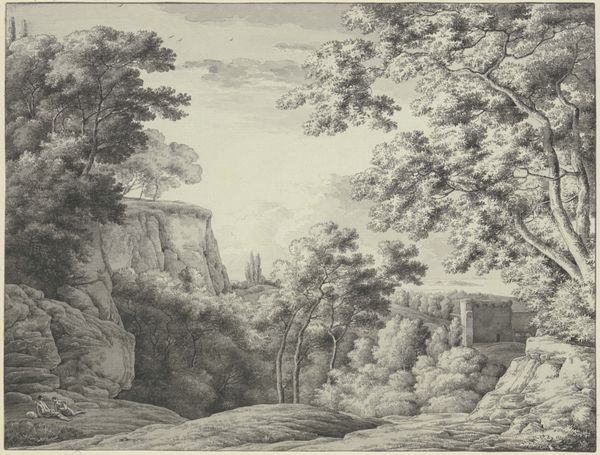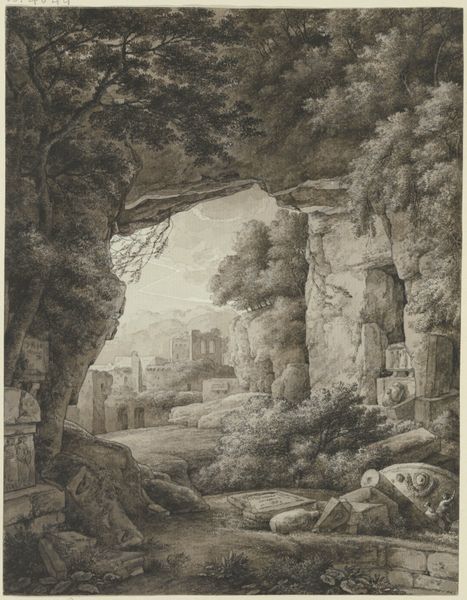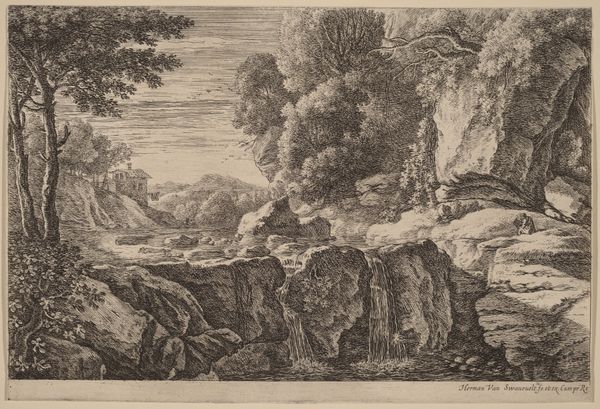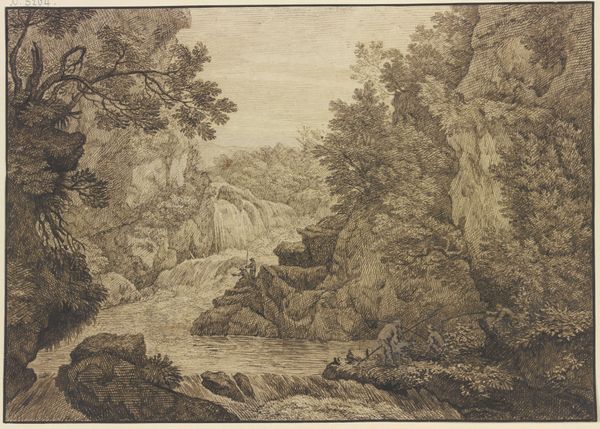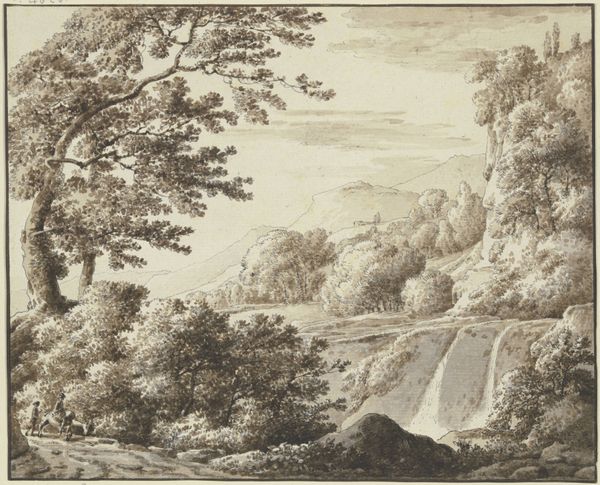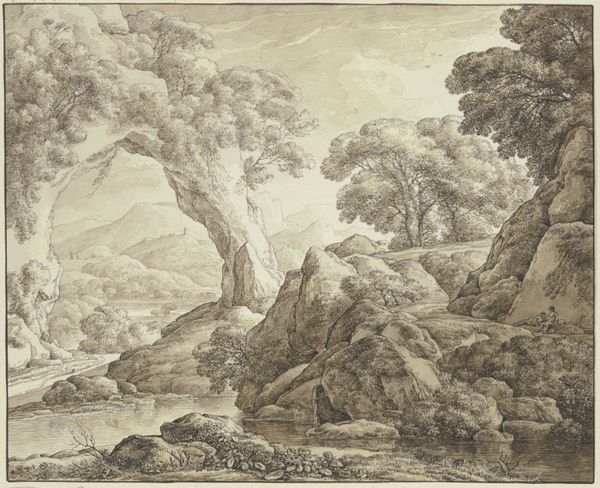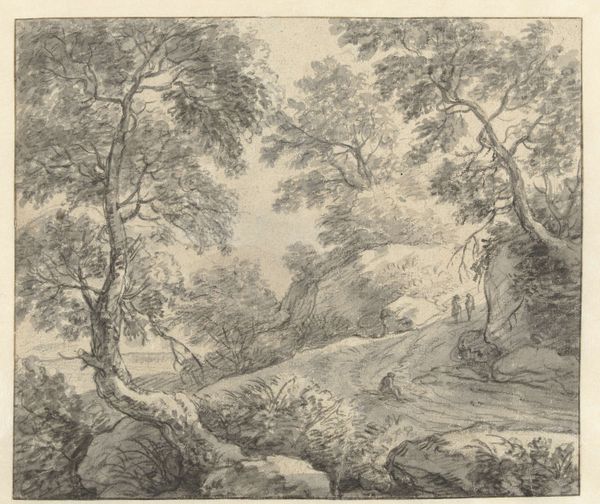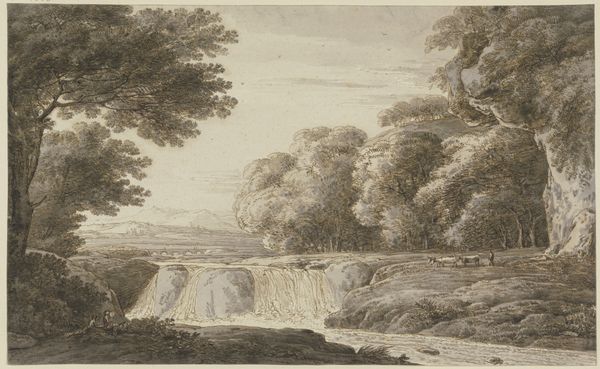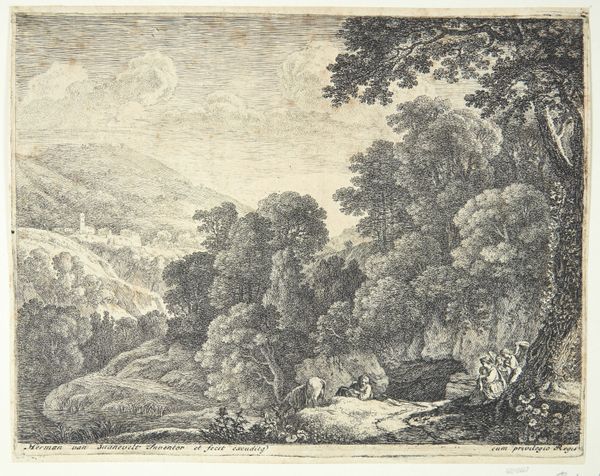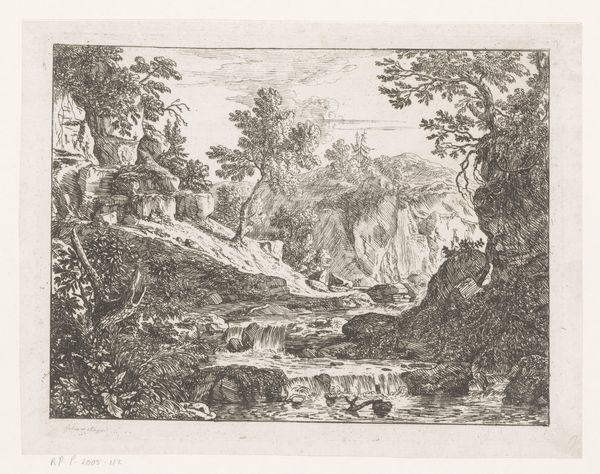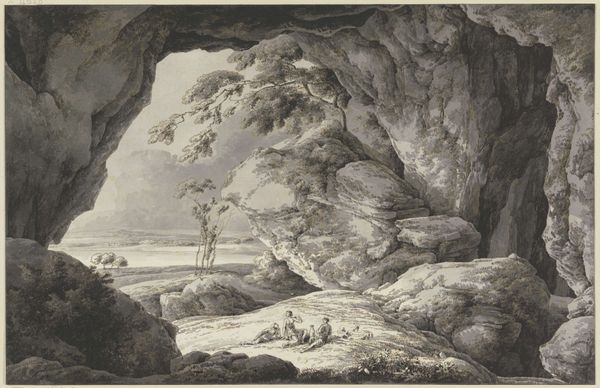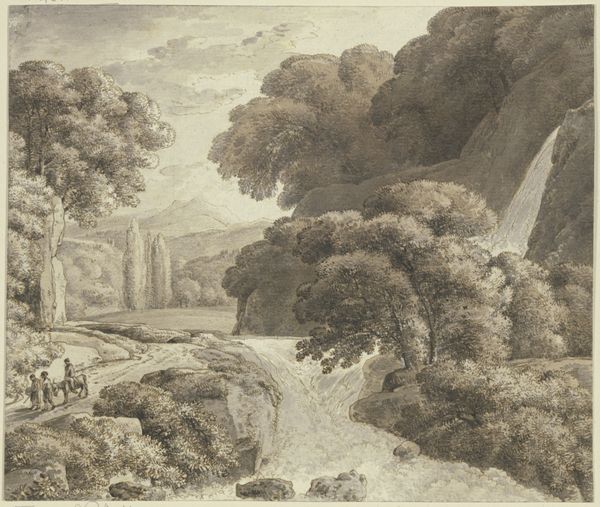
drawing, ink
#
drawing
#
landscape
#
classical-realism
#
figuration
#
ink
#
pencil drawing
#
15_18th-century
#
line
#
realism
Copyright: Public Domain
Editor: So, this drawing, "Landscape with Rock Arch and Ancient Monuments," is by Franz Kobell, rendered in ink. I'm struck by the stark contrast between the rugged rock formations and the delicate classical elements. How do you read this piece? Curator: What strikes me is Kobell's manipulation of materials to evoke both naturalism and a sense of idealized history. The ink, a readily available and easily transported medium, allows for the precise rendering of details – look at the layers of shading that simulate depth. It speaks to a particular mode of production and circulation of landscape imagery during this period. Considering the labor involved, how does this meticulousness affect our understanding of "landscape" as a commodity? Editor: I see what you mean. It’s almost like he’s marketing an experience… a romantic vision of nature enhanced by classical ruins. Curator: Exactly! The landscape itself becomes a curated spectacle, reflecting social desires and even consumption patterns. Consider the ready availability and portability of ink drawings versus paintings... who could access such imagery, and for what purposes? The mass production of these images, and the relatively cheap distribution method (paper) enabled the rise of landscape appreciation across ever broadening demographics. Editor: So it's less about the 'genius' of Kobell and more about understanding the economic and social forces that made this type of image popular and accessible. Curator: Precisely. And it challenges this concept we hold of ‘high art’. This was reproduced *en masse*. And furthermore, who made the paper that the art was drawn on? Where did the ink come from? How far did it travel to get to the artists table? All of this would have informed the price point, distribution, and the value we now give to it retrospectively. Editor: That completely reframes how I see this work. It's not just a pretty picture; it's a product of its time and the materials available to produce it. I'll never look at landscape art the same way again. Curator: Indeed. And questioning the art object as merely an *object* helps to open dialogues of art as both commodity and expression.
Comments
No comments
Be the first to comment and join the conversation on the ultimate creative platform.
